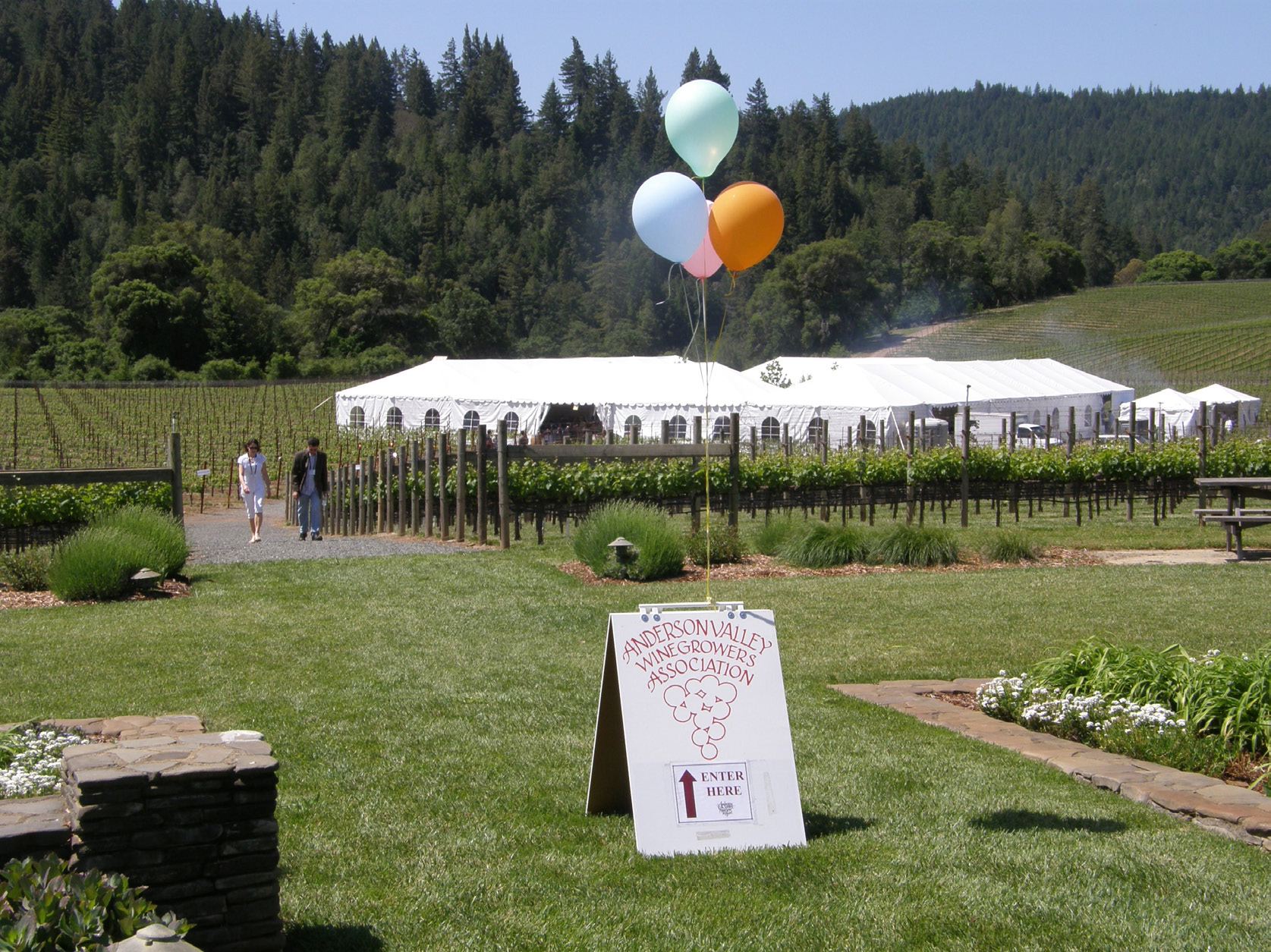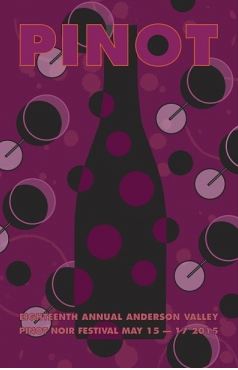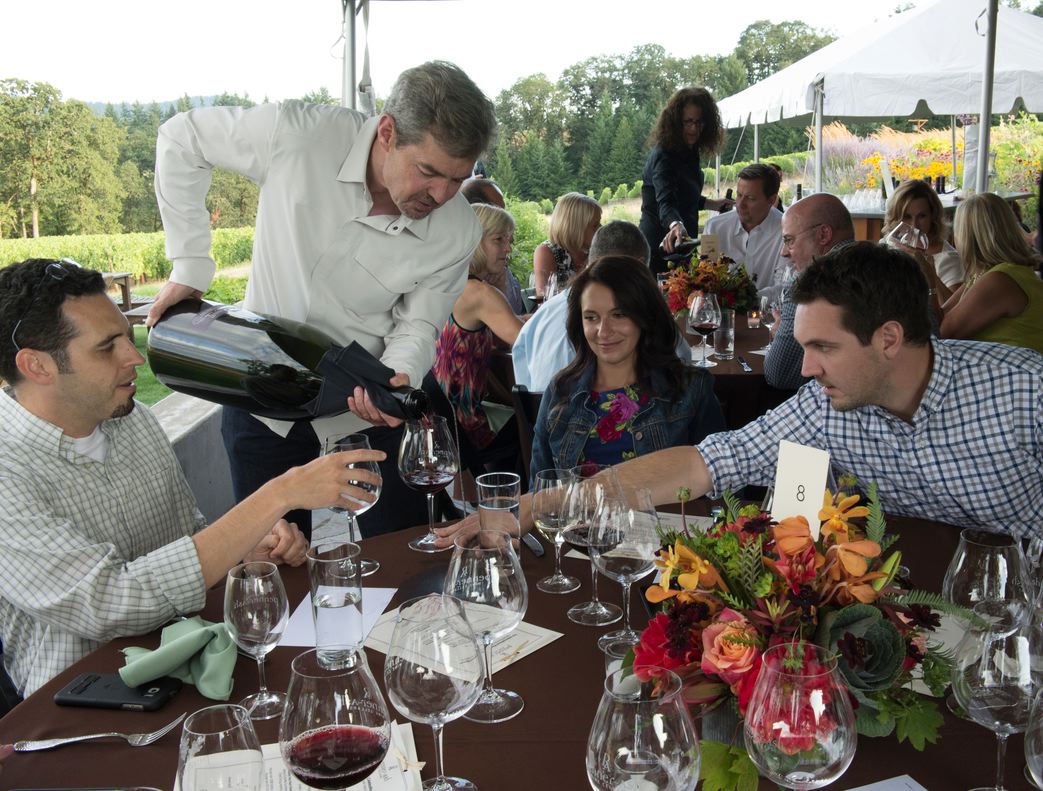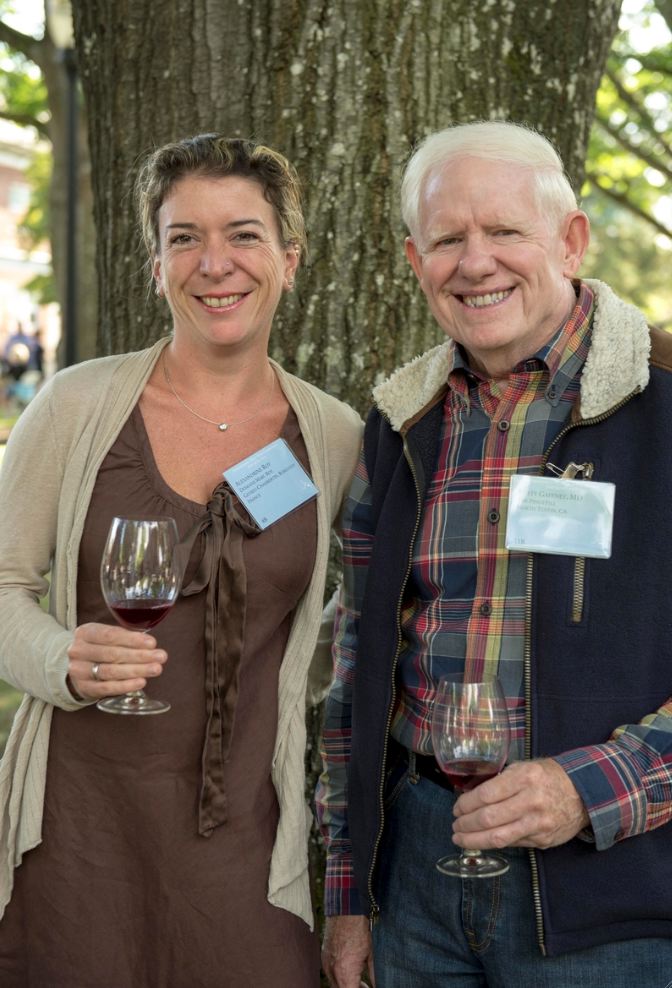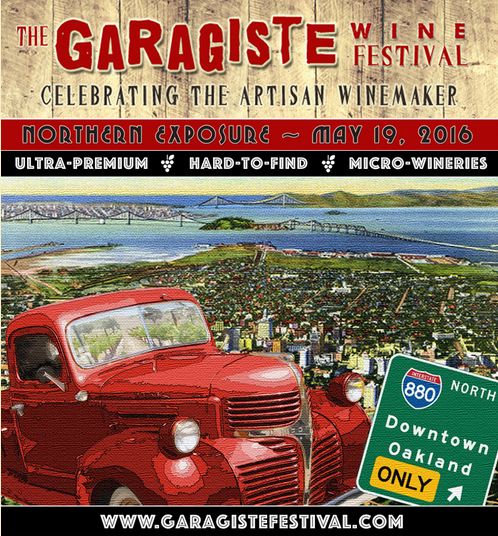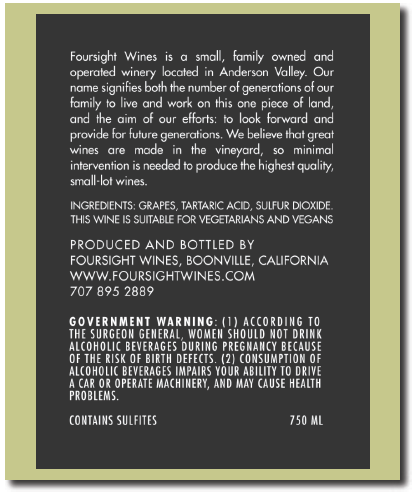PinotFile: 10.29 April 22, 2016
|
Pinot Noir Rosé is REAL Wine...Honestly
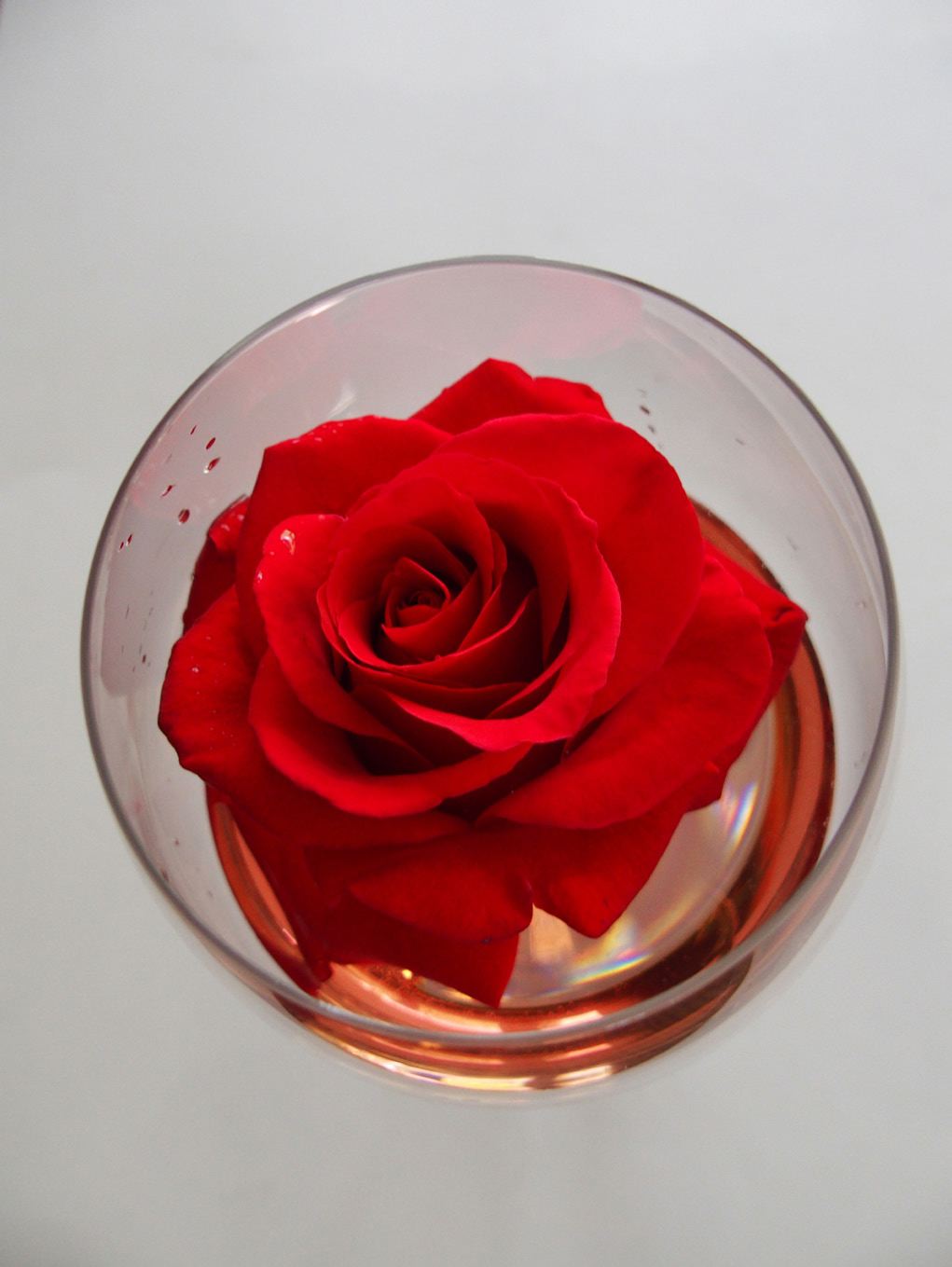 Rosé still wines, particularly those from Provence, France, receive considerable press this time of year since this seasonal varietal is traditionally released in the spring. The United States is second only to France in rosé wine consumption, with women consuming more rosé than men. There are reports touting the rise in popularity of “brosé” among men, but the pink varietal still retains an emasculating connotation to many men. Rosé wines have a history of introducing neophytes to wine over the last fifty years. Slightly sweet Mateus and Lancers rosés were a favored quaff of young people of my baby boomer generation, and more recently, white Zinfandel, a high-volume wine produced in California, has filled the role. These sweet rosés appeal to the American soda pop palate, but can lead to interest in dry versions which have become increasingly de rigueur. Domestic Pinot Noir rosé wines make up a very small percentage of the market, but their limited production is one factor driving their popularity, along with an attractive price point (usually $18-$25). Pinot Noir specialists frequently offer small quantities of rosé each year, often bleeding off some juice (saignée), concentrating the color and flavor compounds from the skins in the remaining juice to enhance the quality of red Pinot Noir. Pinot Noir rosé is rarely profitable at it’s lower price point, and therefore few producers farm vines specifically for rosé and vinify it in a serious manner befitting regular Pinot Noir. Exceptions can be found, and a number of serious Pinot Noir rosés are offered in both Oregon (examples are rosés offered by Antica Terra, Stoller Family Estate, and Van Duzer) and California (Heintz, Ousterhout and Red Car). Although the best examples of domestic Pinot Noir rosé are rarely epiphanic, they should not be judged by their color, and can offer a “real” and exceptional drinking experience in the right context. For me, the biggest advantage of Pinot Noir rosé over red Pinot Noir is that rosé is best chilled and therefore ideally suited for steamy summer days when grazing and dining outdoors is best enjoyed with a lighter, colder wine companion offering lower alcohol and higher acidity. The only thing better on a hot day than a well-crafted and chilled glass of rosé is another glass of rosé. Rosés are best enjoyed when fresh, that is, consumed within a year or two of the vintage date. Vintage can make a difference with Pinot Noir rosés just as with red Pinot Noir, and the current offerings are from the excellent 2014 and 2015 vintages. 2015 was another warm vintage but nearly ideal growing season for Oregon, like 2014, with the resulting harvest generous due to great fruit set, making Pinot Noir rosé readily available. 2015 was also an outstanding vintage for California, and one of the earliest harvests on record (Richard Sanford, owner of Alma Rosa Winery & Vineyards said it was the earliest harvest in his 46 years as a winegrower). Yields were down, following three larges harvests in 2012, 2013 and 2014, but the quality was superior. California Pinot Noir rosé production should be noticeably less prolific from the 2015 vintage. I have reviewed here several recently released serious domestic Pinot Noir rosés. The scores are not comparable to those of red Pinot Noir, but are uniquely gauged for rosé Pinot Noir.
2015 Bacigalupi Russian River Valley Rosé of Pinot Noir 14.1% alc., 75 cases, $30. 34% Wente clone, 33% Pommard clone, 33% clone 667. Brix at harvest 24.3º. The 667 was de-stemmed, gently crushed and sat on skins for 8 years, then pressed and cold fermented for 3 weeks. The Wente and Pommard grapes were destemmed, placed into tank, and at 24 hours a saignée was done. The rosé was fermented separately for 3.5 weeks until dryness, then blended and stored 4 months in neutral oak barrels until bottling. · Moderately deep pinkish red color in the glass. This is the heartiest, ripest and darkest colored of the rosé wines reviewed for this article. Deep aromas of dark red berries, watermelon, orange zest and a hint of toast. Robust flavors of darker cherry, strawberry, black raspberry and blackberry are offered in a softly textured and mid weight wine. This wine drinks more like a still Pinot Noir. Score: 88
2015 Furthermore California Rosé of Pinot Noir 14.2% alc., 190 cases, $25. · Moderate pinkish red color in the glass. Demure aromas of red berries lead to modestly rich flavors of blueberry, cranberry and peach. Soft and smooth in the mouth, lacking in vibrancy. Score: 86
2015 Gary Farrell Russian River Valley Rosé of Pinot Noir 12.9% alc., pH 3.20, TA 0.72, 215 cases, $28. Sourced from The Wat Vineyard of Dutton Ranch in the Green Valley of Russian River Valley. UCD 37 (Mt Eden) clone. Harvest Brix 21.1º. Whole cluster pressed using a gentle Champagne press program that minimizes extraction and maximizes desirable solids for fermentation. 70% stainless steel fermented, 30% fermented in neutral French oak barrels for two weeks. Entire blend remained on the primary lees for about two months. · Delicate coral color in the glass. Striking aromas of crushed strawberries, blood orange and rose petal. A gorgeous, lighter styled rosé that sports vibrant acidity lifting the fruit flavors of strawberry, melon and citrus. Softly textured, finishing refreshingly dry. Score: 91
2015 Hartford Court Russian River Valley Rosé of Pinot Noir 14.1% alc., pH 3.16, 331 cases, $30. Harvested from estate grapes ( primarily Fog Dance Vineyard) at 22.8º Brix. Whole cluster pressed, tank fermented with 20% of the wine finishing ferment in neutral barrels. · Very light pinkish orange color in the glass. Aromas of fresh strawberry and pink grapefruit are echoed on the palate with additional notes of blood orange and orange peel, finishing bright, clean and dry. Score: 90
2015 Kutch Sonoma Coast Rosé of Pinot Noir 12.3% alc., $25. · Moderate pinkish orange color in the glass. Demure aromas of red berries, spice and ocean air lead to a full-flavored rosé replete with bracing acidity that frames the blood orange, strawberry and lime theme. The citrus-driven acidity sticks out on the soprano finish. Score: 87
2015 Lynmar Russian River Valley Rosé of Pinot Noir 14.1% alc., pH 3.35, 743 cases, $25, screwcap. Release May 8, 2016 (Mother’s Day). Multiple clones. Produced from estate fruit using French saignée method, and aged in stainless steel tanks four months. · Darkest in color among the wines tasted in this feature showing a moderate watermelon color. Very even tempered and easy to like, with aromas and flavors of strawberry, raspberry, and hints of peach and herbs. Fuller-bodied, with a bright frame and a refreshing finish. Score: 90
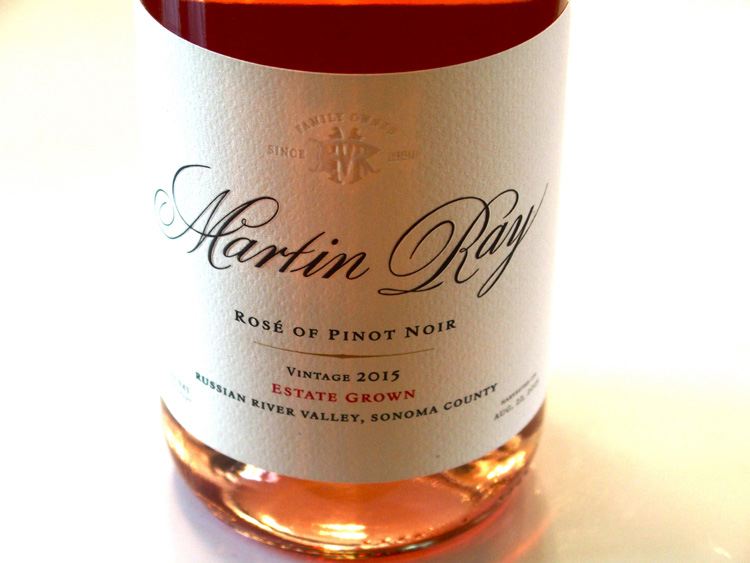 2015 Martin Ray Russian River Valley Rosé of Pinot Noir $20, screwcap. Estate grown. Clones 943 and 115. Produced by the saignée method by which grapes are crushed to a stainless steel tank, allowed 6 to 8 hours of skin contact, then drained to stainless tanks and fermented with proprietary yeasts. · Moderate pink color in the glass. The most inviting nose of the wines tasted in this feature, offering aromas of blood orange, strawberry, apple, lime and watermelon. Vivid flavors echo the nose with added hints of cherry and pink grapefruit. This is a deftly balanced and refreshing wine that will turn you on to Pinot Noir rosé. Score: 92
2014 Ousterhout Woods Vineyard Russian River Valley Rosé of Pinot Noir 13.3% alc., pH 3.35, TA 0.71, 298 cases, $N/A (sold out). Sourced from a small vineyard planted to clone 777 in Goldridge soil. Double Gold Medal from the 2015 Sonoma Harvest Fair. Slow, cool fermentation in stainless steel vessels. · Moderately light pinkish orange color in the glass. Aromas of blood orange, roasted nuts and floral bouquet lead off. Slightly creamy on the palate, with inviting flavors of peach, red berry and orange peel. A serious wine with good focus, and a snappy, long finish. Score: 91
2014 Ousterhout 800 Vines-Jenna’s Vineyard Russian River Valley Rosé of Pinot Noir 13.9% alc., 352 cases, $N/A (sold out). 82% Jenna’s and 18% 800 vines vineyards. · Moderately light pinkish orange color in the glass. Welcoming aromas of strawberry, red cherry, earthy flora and almond skin lead to a beautifully balanced wine with flavors of orange flower and pear, finishing juicy, dry and uplifting. More Provence than California in style. Score: 91
2015 Ousterhout Russian River Valley Rosé of Pinot Noir 13.4% alc., 540 cases, $25. A blend from three vineyards: Bucher, Jenna’s and Nurmi. · Moderate pinkish red color in the glass. Fruit aromas of red berries, peach and citrus mix with savory notes of peat and underbrush. Ripe flavors of strawberry and cherry with an herbal thread in the background. Some richness, finishing dry, even slightly astringent. Score: 89
2015 Ousterhout 800 Vines Vineyard Russian River Valley Rosé of Pinot Noir 13.2% alc., 88 cases, $35. Sourced from a 1-acre vineyard that is in the Green Valley of Russian River Valley. · Moderate pinkish red color in the glass. Demure aromas of cherry, strawberry, cranberry and waffle cone lead to a plump, rich palate of cranberry, citrus and Damsel plum flavors. A comforting wine with a velvet mouthfeel and integrated acidity, finishing bright with some notable length. I get the sense that this wine will be even more appealing with another 6 to 12 months in bottle. Score: 91
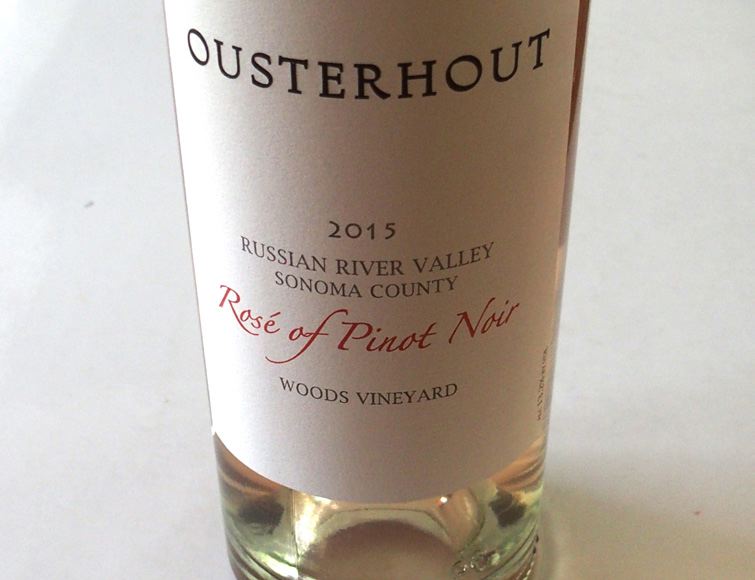 2015 Ousterhout Woods Vineyard Russian River Valley Rosé of Pinot Noir 13.2% alc., 235 cases, $29. Clone 777 planted in a tiny vineyard in the southern part of the Russian River Valley owned by the Wood family. · Delicate tangerine color in the glass. Engaging aromas of strawberry, raspberry and blood orange that I found irresistible. A charge of delicious strawberry, yellow peach, tangerine, tutti fruiti, and dried herb flavors impress and linger on an expansive finish replete with crisp acidity. Plenty to discover in this unusually gifted and beautifully balanced rosé. Score: 93
2015 Soliste Soleil Rouge Sonoma Coast Rosé de Pinot Noir 13.2% alc., 148 cases, $22. 43% 12-hour skin contact, 85% whole cluster press, 4.5 months in neutral French oak barrels. · Pale pinkish orange color in the glass. Lovely aromas of strawberry, cherry, pink grapefruit, rose petal and herbs replicated in the flavors in a vibrant, mouthwatering style that finishes with a welcome cut of steely acidity. Score: 90
2015 Scribe Estate IV Odd Angel Sonoma Rosé 12.0% alc., pH 3.23, TA 0.78, $38. Harvest Brix 21º. Blend of fruit from Estate and Carneros vineyards. Whole cluster pressed followed by a long, cold fermentation in stainless steel tanks. · Moderately light pinkish orange color in the glass. Upon opening, bright aromas of pear, strawberry, lime and pink grapefruit leap from the glass. Luscious, yet crisp on the palate, with flavors of strawberry, peach, pink grapefruit and a subtle petrol note. A wine of admirable intensity and purpose that finishes dry. Score: 90
2015 Stoller Family Estate Dundee Hills Oregon Pinot Noir Rosé 12.5% alc., pH 3.06, TA 0.69, $25, screwcap. Estate grown grapes with specific sections of vineyard farmed intentionally for rosé. Whole cluster pressed and fermented in stainless steel. · Appealing light pink color in the glass. Lovely aromas of crushed strawberry, peach and rose petal. Exquisitely balanced and refreshingly crisp, with many nuanced flavors including strawberry, pink grapefruit, lime, herbs, peach and red berry. Score: 91
Sips of Recently Tasted ChardonnayChardonnay is by far the most popular varietal among American wine consumers, representing about 21 percent of table wine volume in United States food stores in 2014, according to estimates of Gomberg- Fredrikson & Associates. The 2015 Sonoma State Wine Business Institute report on American wine consumer preferences found that when a sampling of subjects in the age group of 21 to 68 years were asked to pick their favorite grapes from a list, 50% included Chardonnay, the most of any variety. Chardonnay is California’s most widely planted winegrape with 97,826 acres reported in 2014 leading to a total harvest of 718,029 tons. The USDA National Agricultural Statistics Service reported that Chardonnay accounted for 16.4% of all grape varieties crushed in California in 2015, with Cabernet Sauvignon second at a distant 11.8%. Monterey County has the most California Chardonnay grape acreage, followed by Sonoma County and then the San Joaquin Valley. Oregon is a very small player in Chardonnay production compared to California, harvesting only 3,972 tons in 2014. However, recent years have shown a renewed interest and commitment by Oregon vintners to producing Chardonnay and the quality of the wines have escalated. The current crop of Oregon Chardonnays represent the third iteration. The earliest Chardonnays of David Lett and others were superb, but it was quickly learned that the clones planted, such as the Wente clone, would not ripen properly in Oregon’s climate. This was at the time in the 1970s when Americans were relishing bold, buttery Chardonnays from California. The second iteration resulted from Chardonnay plantings in sunnier climes with hopes that the grapes would ripen. The grapes did ripen, but acid levels in the wines were wanting. The third and current wave of Oregon Chardonnay has been most successful because of viticultural knowhow and the importation and wide plantings of Dijon clones of Chardonnay. Chardonnay was planted in California back as far as the late 1800s. In 1882, Charles Wetmore, the President of the California State Viticultural Commission and owner of Cresta Blanca Winery, brought back budwood cuttings from Meursault in Burgundy. The budwood was then established in vineyards in the Livermore Valley. In 1912, Ernest Wente went to France and took cuttings from the University of Montpellier viticultural nursery. These cuttings took a prominent place in the Wente Vineyards in Livermore that had been established originally in 1883 by C.H. Wente, along with cuttings taken from the Gier Vineyard that had used some of Wetmore’s budwood. Most Chardonnay vineyards were uprooted during Prohibition, but small plantings of the Wente Chardonnay survived Prohibition. Ernest and Herman Wente took over the family business after Prohibition, and developed the Wente Chardonnay clones that completely transformed California’s Chardonnay wine landscape. In 1948, Fred and Elanor McCrea obtained budwood from Wente Vineyards for planting at their Stony Hill Vineyard in Napa. Louis Martini subsequently took budwood from Stony Hill and referred to it as “Wente,” a term that quickly caught on by other winegrowers who took budwood from the Wente Vineyards. Budwood from some of Martini’s vines, as well as Wente plantings in Livermore and the nursery established in Arroyo Seco by Karl Wente, were taken to the Foundation Block at University of California at Davis by Howard Olmo beginning in 1955. Olmo selected material that appeared to be disease-free and offered good yields. At the Foundation Block, the vines were grafted, tested and certified as Foundation Plant Materials Service (F.P.M.S.) clone 4. This clone is referred to as the “Wente” or “Heat-treated Wente.” Non-certified budwood, like that taken by the McCreas, is referred to as “Old Wente. The Wente family will be honored at this year’s International Chardonnay Symposium May 12-14, 2016, held in Pismo Beach, California. This year the Wente family celebrates the 80th anniversary of bottling the nation’s first varietally-labelled Chardonnay, a 1936 vintage. The Chardonnay Symposium will present a panel discussion titled, “Wente Clone Comparative Tasting.” For more information, visit www.TheChardonnaySymposium.com. 34 different clonal varieties of Chardonnay have been identified in France and these so-called “Dijon clones” have been exported all over the world. The most common Chardonnay Dijon clones planted are 96 and 95, both traced to Meursault, France, and 76, traced to the Saone et Loire region of France. Dijon clones have gain desirability in Oregon because they give better yields than the Wente clone, and they ripen earlier. The first Dijon clones of Chardonnay established in the Willamette Valley were planted at Knudsen Vineyard in the Dundee Hills in 1990 (clones 76 and 96, with clone 95 added in 1995). There are very few acres of Old Wente plantings remaining in the Northern Willamette Valley as most of the Wente vines have been displaced by Dijon clones. Some Oregon vintners, including Jay Christopher and Josh Bergstrom still profess a love for the Wente clone. Oregon has its own International Chardonnay Celebration, already held this year in Newberg in March. Visit www.ipnc.org/oregon-chardonnay/. The most popular style of domestic Chardonnay is whole cluster pressed and barrel fermented with malolactic fermentation occurring in barrel, and aged sur lie with battonage. The combination of malolactic fermentation and new French oak barrels leads to richer wines with a noticeably creamy texture. There are many variations of this theme and winemaker decisions and manipulations generally play a larger role in Chardonnay than Pinot Noir. Why review Chardonnay in the PinotFile? Many wineries that craft Pinot Noir also produce Chardonnay and the two are natural partners. There is also a familial connection, as Pinot Noir is one of the parents of Chardonnay. Finally, Chardonnay is my favorite white varietal, and I am enthusiastic about sampling the diversity of offerings.
2014 Bevan Cellars Ritchie Vineyard Russian River Valley Chardonnay 14.6% alc., $65. · Moderate golden yellow color in the glass. Heavily toasted oak dominates the nose which adds aromas of buttery brioche and petrol. Ripely fruited, with flavors of yellow citrus and stone fruits, salted caramel and toast in a full, well-oaked style that made California Chardonnay both famous and infamous. The wine sports a rich and lush mouthfeel and satisfying cut of steely acidity on the finish. Score: 88
2014 Big Table Farm Willamette Valley Oregon Chardonnay 13.2% alc., $45. Label shows Big Table Farm bee hives. Barrel fermented in mixed age French oak barrels. · Light golden yellow color with a slight haze in the glass. Aromas of lemon creme, salted apple, and warm biscuit leap from the glass upon opening. Flavors of apple, pear, citrus, honey and a hint of oak carry through to a finish that is clean, dry and cut. The wine loses a bit of flash over time in the glass indicating it is for current enjoyment. Score: 90
2014 Big Table Farm The Elusive Queen Willamette Valley Oregon Chardonnay 13.6% alc., 116 cases, $85. The name was inspired by Clare’s passion for keeping bees. Unfined and unfiltered. · Light golden yellow color with a slight haze in the glass. Aromas of lemon oil, pine sap, cut apple and spice hold up nicely over time in the glass. Delicious flavors of lemon, apple and yellow peach with deft oak integration. The mantle of juicy acidity brings the fruit to life and the lengthy finish seduces with goodness. A serious, intriguing wine that deserves contemplation and even decanting after opening. Score: 94
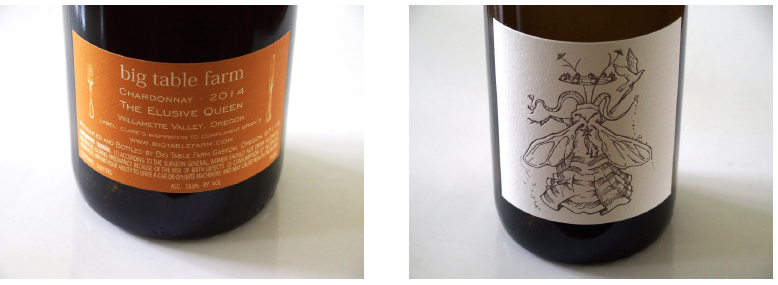
2014 Byington Tin Cross Vineyard Alexander Valley Chardonnay 13.5% alc., pH 3.59, TA 0.57, 875 cases, $25. Harvest Brix 26.0º. Described on label as a “Chablis style,” this wine spent 12 months in stainless steel tank. · Light golden yellow color and clear on the palate. Clean aromas of lemon creme, apple and Nutella lead to a crisp, bright, and streamlined wine with appealing flavors of lemon-lime, melon, green apple and bay leaf. This French-styled wine will work nicely as an aperitif or as an accompaniment to shellfish. Score: 89
2014 Byington Tin Cross Harrison Block Reserve Alexander Valley Chardonnay 14.0% alc., pH 3.74, TA 0.48, 200 cases, $40. Harvest Brix 24.0º. Aged 12 months in French and Hungarian oak barrels. · Moderate golden yellow color and clear in the glass. A hint of reduction accompanies aromas of nori, peach, lemon pie and shredded bark. Slightly viscous on the palate, with fruit flavors of lemon, pear and peach, along with a leesy note. Rather flat in character, lacking acidic vibe, finishing lean. Score: 86
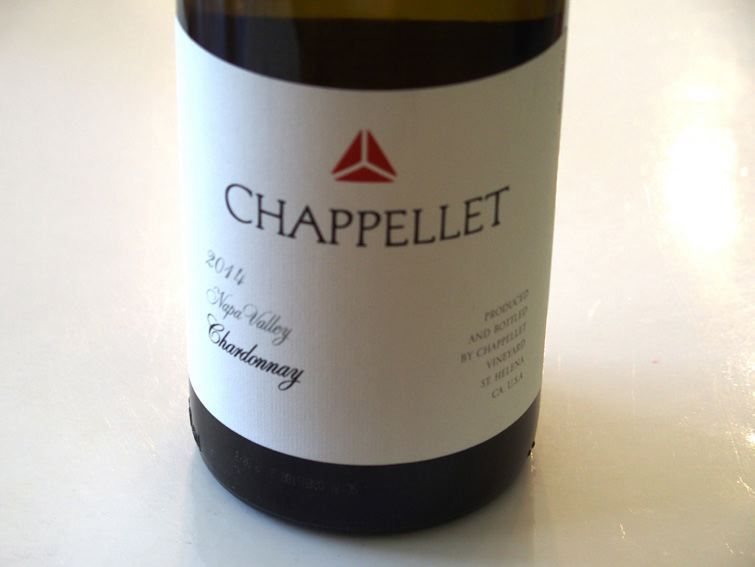 2014 Chappellet Napa Valley Chardonnay 14.5% alc., pH 3.43, TA 0.60, $35. Harvest Brix 24.2º. Sourced from vineyards in some of the coolest regions of Napa Valley with the majority from Kelly Ranch that overlooks San Pablo Bay. Aged on lees for 8 months in French oak barrels, 33% new. A significant portion of the wine underwent malolactic fermentation. · Moderate golden yellow color and clear in the glass. An exceptional wine in every way, with soaring aromas of yellow orchard fruits, citrus blossom and honey that persist over time in the glass, and juicy flavors of lemon and white peach fruits with hints of vanilla and caramel. Classically styled, with a seamless character, and texturally soft and smooth, this wine is like a brisk, refreshing walk at sunrise. Score: 94
2014 FEL Anderson Valley Chardonnay 14.2% alc., 1,441 cases, $28. Released December 1, 2015. A blend of numerous heritage selections and Dijon clones sourced from several vineyards including Ferrington and Savoy. Harvest Brix 23.1º. Whole cluster pressed, fermented in neutral French oak barrels with limited malolactic fermentation. Aged on the lees in 60-gallon neutral French oak barrels for 9 months. · Moderate golden yellow color in the glass. Aromas of yellow-fleshed stone fruits, lemon oil and meadow lead to a bright and crisp palate of lemon, melon and peach flavors with a hint of roasted nuts and butter brickle. A refreshing wine that is not excessively adorned with oak and picks up interest over time in the glass, finishing with a lengthy, citrus-driven finish. Score: 89
2014 Kutch Santa Cruz Mountains Chardonnay 12.75% alc., $N/A. · Moderately light golden yellow color and clear in the glass. Aromas of green grass and toast dominate with little fruit on the nose. Lean and woody, with tight acidity, tasting of tart citrus fruits and a petrol note reminiscent of Riesling. Slightly creamy in texture, with dry tannins on the austere and citrus-flavored finish. Score: 86
2013 La Follette Sangiacomo Vineyard Sonoma Coast Chardonnay 14.1% alc., pH 3.60, TA 0.58, 890 cases, $38. Greg La Follette has worked with Sangiacomo vineyards since 1984. This bottling is from Roberts Road Vineyard, planted in 1998 in the Petaluma Gap. Old Wente clone. An intentionally reductive style using native yeasts. Lees contact was maintained throughout the 10 month aging process along with gentle batonnage until the beginning of spring. · Moderate golden yellow color and clear in the glass. The complex nose offers a variety of aromas including lemon oil, yellow peach, toasted brioche, spice and caramel, elevating in intensity over time in the glass. Mildly creamy and plush on the palate, with flavors of lemon drop, yellow peach, baked pear, vanilla and dark toast. The oak input is not shy, but doesn’t overwhelm, and with balanced acidity and a clean, dry finish there is much to like. Score: 90
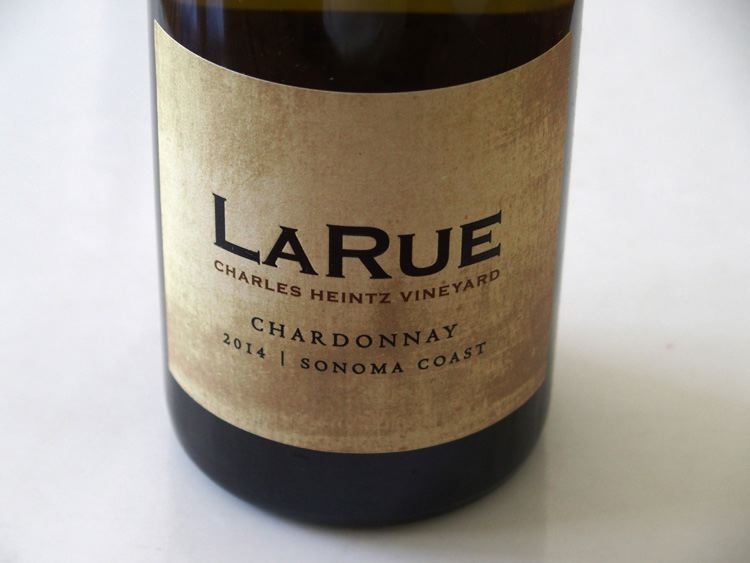 2014 LaRue Charles Heintz Vineyard Sonoma Coast Chardonnay 13.1% alc., 50 cases, $60. Vineyard planted in 1982 to Wente clone 4. Aged 17 months in French oak barrels. · Moderate golden yellow color and clear in the glass. Scents of golden apple, wildflower honey and oily oak lead to a bright core of golden apple flavor enriched with notes of white peach and table grape. Nicely composed, with briny acidity and a comforting baby oil mouthfeel. Score: 91
2014 MacRostie Russian River Valley Chardonnay 14.2% alc., 325 cases, $32, screwcap. Sourced from Ritchie (Old Wente clone) and Mirabel vineyards.Full malolactic fermentation, 9 months of aging with lees stirring in French oak barrels, 22% new. · Light platinum yellow color and clear in the glass. The nose is energized with aromas of baked pear, lemon oil, brioche and a spritz of lime. Appealing flavors of lemon creme pie, lime, vanilla and faint toasty oak are in sync with sound acidity. Straightforward and easy to like with a pleasingly creamy mouthfeel. Score: 89
2013 Martin Ray Mill Station Vineyard Green Valley of Russian River Valley Chardonnay 13.5% alc., pH 3.41, TA 0.68, $35. Harvest Brix 23.9º. Barrel fermented with select yeast strains. Aged 12 months in French oak barrels, 40% new. · Moderate golden yellow color and clear in the glass. Hi-tone aromas of lemon zest, banana creme, and cookie dough lead to relatively light, but bright and clean flavors of lemon creme, peach, and pineapple with a hint of vanilla and spice. Slightly creamy in the mouth with a refreshing finish. Score: 89
2014 Patz & Hall Dutton Ranch Russian River Valley Chardonnay 14.2% alc., $44. A blend of older plantings in western Sonoma County including heritage clones and selections. Whole cluster pressed, indigenous yeast fermentation, aged on lees with weekly stirring, 100% malolactic fermentation in barrel, aged in French oak barrels, 38% new. · Moderate golden yellow color and clear in the glass. Clean aromas of petrichor, banana creme, jasmine and peach. Simple, but satisfying, with a supple mouthfeel, integrated acidity, and bright flavors of lemon, pineapple and nutty oak. Score: 89
2014 Patz & Hall Hudson Vineyard Carneros Chardonnay 14.2% alc., $55. From a 3-acre block planted to the Hudson-Wente selection isolated by Lee Hudson. Whole cluster pressed, indigenous yeast fermentations, aged on lies with weekly stirring, 100% malolactic fermentation in barrel, aged in French oak barrels, 45% new. Bottled without filtration. · Moderately golden yellow with a slight haze in the glass. Mild burnt match reduction upon opening that resolves over time in the glass revealing aromas of lemon rind, yellow apple, and vanilla. Delicious flavors of lemon pie, vanilla creme and brioche. Nicely crafted with a classy demeanor, finishing with uncommon length for a California Chardonnay. The wine still seems slightly reductive, tight and holding back at this stage. Score: 92
2014 Pfendler Vineyards Sonoma Coast Chardonnay 14.1% alc., 400 cases, $38. Estate grown. Winemaker Greg Bjornstad. · Moderate golden yellow color and clear. The nose unfolds beautifully over time in the glass, revealing aromas of lemon creme pie, malted milk, spice and the slightest toast. Highly enjoyable, with a tasty mix of lemon and white peach flavors presented in a soft and creamy texture with a crisp frame. The wine is nicely balanced with contributory oak, but it is the dreamy mouthfeel that pleases most. Score: 91
2014 Phelps Creek Vineyards “Lynette” Columbia Gorge Chardonnay 13.8% alc., 296 cases, $38. Owner Robert A. Morus’ wife is named Lynette. Estate grown Dijon clones, barrel fermented. · Moderate golden yellow color in the glass. The nose is slow to reveal aromas of citrus blossom, baked apple, apple core and vanilla. Flavors of melon, Meyer lemon and salted apple are seasoned with a light touch of oak. Crisp and uplifting, yet refined and balanced. Score: 88
2013 Saxon Brown Durell Vineyard Sonoma Coast Chardonnay 14.7% alc., 290 cases, $68. · Moderately light golden yellow color and clear in the glass. Unusual aromas of gun metal, lemon twig and alfalfa lead off. Flavors of lemon, baked apple, and candy apple follow in a balanced offering with an hi-tone citrus-driven finish. Score: 89
2013 Saxon Brown Sangiacomo Vineyard “Green Acres Hill” Carneros Chardonnay 14.2% alc., 149 cases, $58. · Moderately light golden yellow color and clear in the glass. Uplifting aromas of lemon, nectarine, nori and lees lead off. Reasonably concentrated flavors of baked pear, peach and crème brûlée. Quite expressive with noticeable mid palate and finishing presence. Nicely composed and harmonious with a juicy finish. Score: 91
2013 Saxon Brown Hyde Vineyard Napa-Carneros Chardonnay 14.4% alc., 223 cases, $68. · Moderately light golden yellow color and clear in the glass. Admirable complexity in this wine that offers scents of pear, forest flora, blonde caramel, chalk and gun metal as well as flavors of pear, lemon and subtle oak. The fruit grabs on to the palate and sustains, picking up more glamor over time in the glass. Easy to like because of impeccable balance. Score: 92
2014 Sonoma-Loeb Sangiacomo Vineyard Carneros Chardonnay 14.5% alc., pH 3.46, TA 0.62, $27. Harvest Brix 23.4º-26.0º. 50% malolactic fermentation, aged on the lees for 8 months in French oak barrels, 35% new. Produced and bottled by Chappellet Vineyard where winemaker Phillip Corallo-Titus has been at the helm since 1990. · Moderately light golden yellow color and clear in the glass. Inviting scents of lemon meringue, pineapple and baking spices are echoed on the palate with added notes of white nectarine and apple. Fuller bodied, silky in the mouth, with impeccable balance. Score: 90
2012 Wind Racer Anderson Valley Chardonnay 13.8% alc., $40. Robert Young clone (17). Aged 14 months on the lees with frequent stirring in French oak barrels, 26% new. · Moderate golden yellow color and clear in the glass. The nose opens with some reductive aromas of sulfur and flint, improving over time in the glass although no fruit shows up. Better on the palate, with flavors of lemon, peach, caramel and crème brûlée. Soft and slightly viscous, with a moderately long and chalky-textured finish. Score: 88
2012 Wind Racer Russian River Valley Chardonnay 14.6% alc., $40. Clones 809 and Wente 4. Aged 14 months on the lees with frequent stirring in French oak barrels, 28% new. · Moderate golden yellow color and clear in the glass. The nose offers aromas of apple core, nori, lemon, yeast and gardenia. Soft on the palate with integrated, sound acidity, offering flavors of lemon-lime and briny apple. Lacks the lusciousness we have come to expect from Russian River Valley Chardonnay, seemingly even a bit faded as the wine is now four years old. Score: 87
Sips of Recently Tasted Pinot Noir
Big Table Farm, Gaston, OregonBig Table Farm produced almost 700 cases of Chardonnay and 2,000 cases of Pinot Noir in the 2014 vintage. For the first time, some of the best barrels were pulled out, blended and bottled, without dramatically affecting the regular bottlings. The Earth Pinot Noir and Elusive Queen Chardonnay are the result with only a little over 100 cases of each available. These wines are a departure from past bottlings. Winemaker Brian Marcy studied at University of California at Davis and has worked in several esteemed wineries including Turley Wine Cellars, Neyers Vineyards, Blankiet Estate and Marcassin. He is a fan of whole cluster ferments and the wines reflect this. Clare Carver manages the 70-acre farm and designs the unique wine labels which allows her to express her artistic talent. Visit www.bigtablefarm.com. Tasting by appointment only.
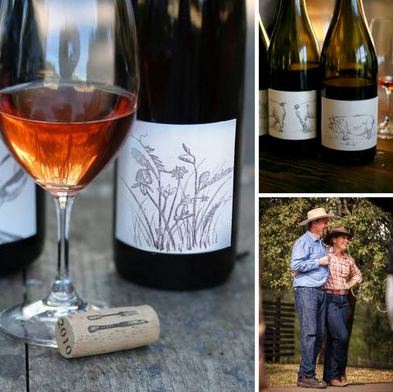
2014 Big Table Farm Willamette Valley Oregon Pinot Noir 13.8% alc. $42. Sourced from all the winery’s Pinot Noir sites. Aged in a combination of new, used and neutral French oak barrels. · Moderate reddish purple color in the glass. Lovely scent of dark fruits, spice, bacon, pine sap and rose petal, holding up nicely over time in the glass. More sappy fruit in this vintage offering glorious flavors of dark raspberry, blackberry, anise, smoke, and plum reduction sauce that saturate the palate with goodness. A floral note in the background confirms the presence of whole clusters. Something about this wine’s flavor profile seems to reflect an Asian slant. A very interesting and complex wine that has enough structure and acidity to bring the fruit in balance. A bold wine by Oregon standards. Score: 91
2014 Big Table Farm Pelos-Sandberg Vineyard Eola-Amity Hills Oregon Pinot Noir 13.6% alc., $48. Label features Don’s tractor. Unfined and unfiltered. · Moderate reddish purple hue in the glass. Plenty of whole cluster goodness stands out on the nose that offers aromas of dark berries, Moroccan spices, smoke and rose petal. A highly unique wine that doesn’t taste like every other Oregon Pinot Noir. The wine always has a characteristic smoke and manure note that compliments the flavors of dark berries, blueberries, pomegranate and spice. The tannins are immersed, the acidity keeps the wine fresh and vibrant, and the finish is uncommonly generous and spicy. Score: 93
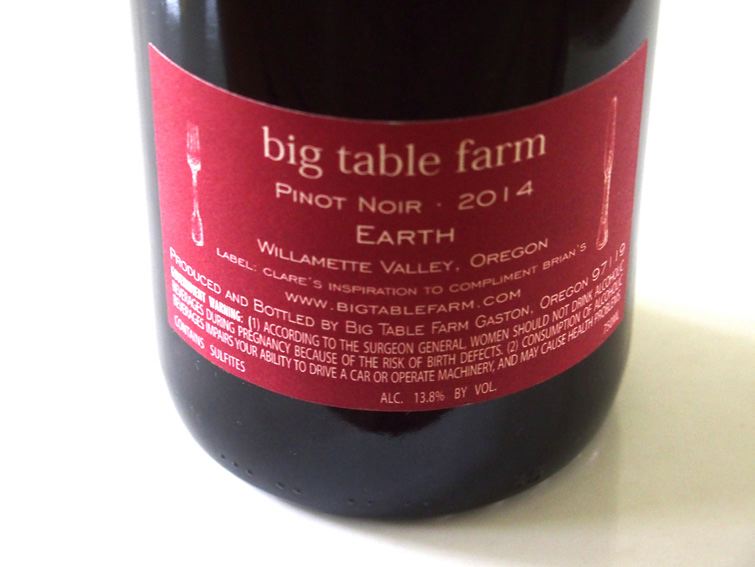 2014 Big Table Farm Earth Willamette Valley Oregon Pinot Noir 13.8% alc., 108 cases, $105. Label features a cattle skull. · Moderately light reddish purple color in the glass. Intoxicating aromas of crushed black cherries, exotic spices, rose petal and a hint of oak. The wine hits the palate with vigor, offering bright flavors of black cherry, blackberry, and smoky spices. Beautifully balanced and refined with a finish that holds on for dear life. This wine does not have the power of the Willamette Valley and Pelos- Sandberg offerings, but is more seductive with sleek tannins and a polished demeanor. This is a black tie wine that commands plenty of respect. Score: 94
Byington Vineyard & Winery, Los Gatos, CaliforniaFounded by Bill and Mary Byington, Byington Vineyard & Winery was originally a 95-acre mountainous retreat for the family acquired in 1958. Vineyard plantings came later. Byington was bought by Los Altos Vineyards in 2013 and the new owners have invested significantly in the property’s vineyards, wine production, facilities and grounds.The Byington Estate Vineyard is located at 2,100 feet elevation. Los Altos Vineyards also owns a 240- acre ranch in Alexander Valley with 36 acres planted to various varieties including Chardonnay (see review of Chardonnay in this issue). Visitors are welcome to the winery’s 18,000-square-foot villa that houses the winemaking facilities, wine cave, tasting room and event facilities. Visit www.byington.com.
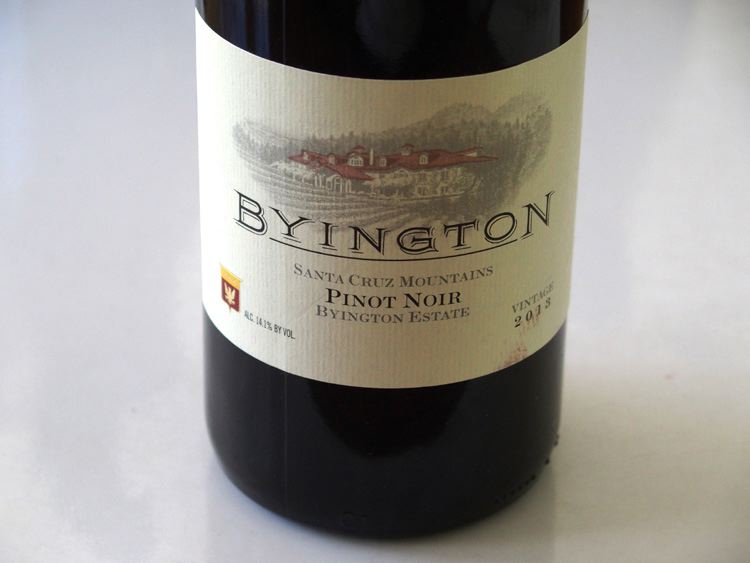 2013 Byington Byington Estate Santa Cruz Mountains Pinot Noir 14.1% alc., pH 3.62, TA 0.57, 265 cases, $39. Harvest Brix 23.5º. Aged 11 months in French oak barrels. · Moderately dark reddish purple color in the glass. The perfume of cherry, sous-bois and pine is inviting. Vivid, uplifting and charming on the palate, with mid weight flavors of fresh cherries and a thread of dried herbs. Crisp acidity keeps the fruit vibrant and the tannins are nicely integrated. The wine finishes with appealing generosity. Score: 91
2014 Byington Byington Estate Santa Cruz Mountains Pinot Noir 13.8% alc., pH 3.70, TA 0.56, 775 cases, $39. Harvest Brix 23.5º. Aged 11 months in French oak barrels. · Moderately dark reddish purple color in the glass. This wine is quite different from the 2013 vintage bottling, offering aromas of red cherry, baking spice and sandalwood. The mid weight core of red cherry and red berry fruits aim to please as does the spice accent. Delicious would be a proper term.The tannins are balanced and overall the wine is quite precocious. My only nit is that a hint of alcoholic warmth shows up on the finish. Score: 90
FEL Wines, Sonoma, CaliforniaFounded by Cliff Lede in 2002, Lede Family Wines encompasses Cliff Lede Vineyards in the Stags Leap District of Napa Valley, and FEL Wines featuring appellation and single vineyard Pinot Noir and Chardonnay from the Anderson Valley and Sonoma Coast. Winemaker Ryan Hodgins has over a decade of experience creating wines from the Anderson Valley. FEL Anderson Valley Chardonnay is reviewed elsewhere in this issue.
2014 FEL Anderson Valley Pinot Noir 14.4% alc., 2,634 cases, $38. Release April 1, 2016. A blend of clones including Pommard, Mt Eden, Martini and Dijon from Donnelly Creek, Savoy, Wiley and Ferrington vineyards. Harvest Brix 24.6º. · Moderate reddish purple color in the glass. Brooding aromas of darker fruits including black cherry. Robust and full-bodied on the palate, with flavors of black cherry, blackberry, Asian 5- spice, and tobacco. Very much a big and riper wine in this vintage with noticeable tannins that ameliorate over time in the glass. The fruit-driven finish lingers with purpose. Score: 90
Foursight, Boonville, CaliforniaAs described on the back label of Foursight Pinot Noir wines, the ingredients are grapes, tartaric acid and sulfur dioxide and the wines are suitable for vegetarians and vegans. Proprietary yeast has never been inoculated at the Foursight winery. All the wines tasted were rechecked the following day from a previously opened and re-corked bottle and were still stellar indicating some promising longevity. Visit www.foursightwines.com. Pictured is Foursight family clockwise from bottom left - Kristy Charles, Nancy Charles, Bill Charles and Joe Webb (photo credit John Clayton).
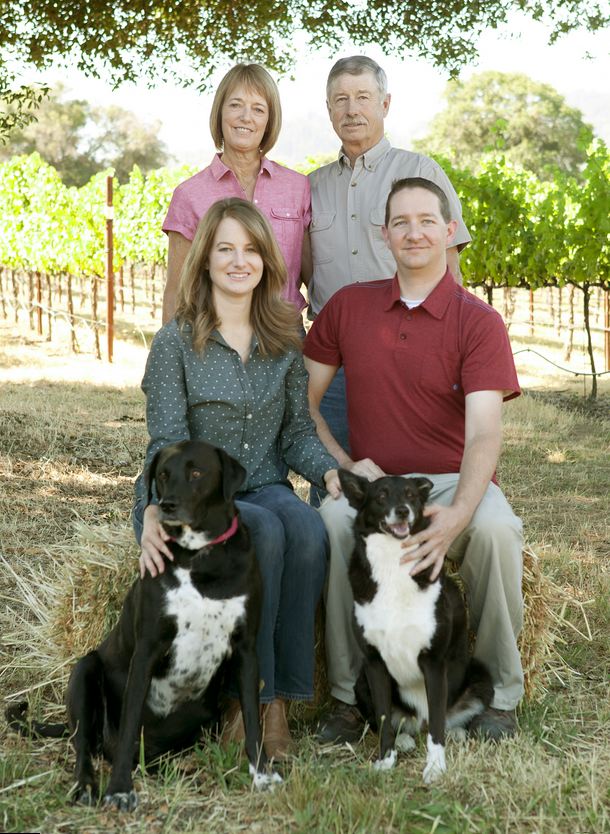
2013 Foursight Charles Vineyard Zero Anderson Valley Pinot Noir 13.9% alc., 361 cases, $38. Released February 1, 2016. Clones 114, 115, 777 and Pommard 05. Wild yeast fermentation in open-top tanks with 40% whole clusters, wild malolactic fermentation, and aged in second year and older oak barrels (zero new oak). Bottled unfined and unfiltered. · Moderate reddish purple color in the glass. Delicate aromas of raspberry, rhubarb, blackberry and the slightest oak lead to a mid weight plus core of black raspberry, black cherry and black plum fruits framed in modest fine-grain tannins. Great purity of fruit with an explosion of unadulterated Pinot fruit flavor and a long, intense finish. Score: 91
2013 Foursight Charles Vineyard Anderson Valley Pinot Noir 13.8% alc.,450 cases, $46. Clones 114, 115, 777 and Pommard 05. 40% whole cluster, native fermentation and malolactic fermentation, basked pressed, and aged in French oak barrels, 40% new. Bottled unfined and unfiltered. · Moderately light cherry red color in the glass. The aroma of fresh cherry pie builds in intensity over time in the glass. The mid weight spiced cherry and cranberry flavors are very giving. Bright, juicy acidity enlivens this cherry bomb that has a lingering cherry-themed finish. Score: 91
2013 Foursight Charles Vineyard Clone 05 Anderson Valley Pinot Noir 14.4% alc., 125 cases, $49. Released February 1, 2016. 100% Pommard 05. Four favorite barrels. Wild yeast fermentation, 40% whole clusters, hand punch downs, wild yeast malolactic fermentation in barrel, and aged in French oak barrels, 60% new. Bottled unfined and unfiltered. · Moderate reddish purple color in the glass. Robust aromas of Bing cherry and bark are followed on the palate by a delicious core of fresh black cherry fruit and cola flavors. Very suave, with a tug of balanced tannins and an amazingly intense finish that elevates this wine above the norm. This is a perfect example of why Pommard is my paramour. Score: 94
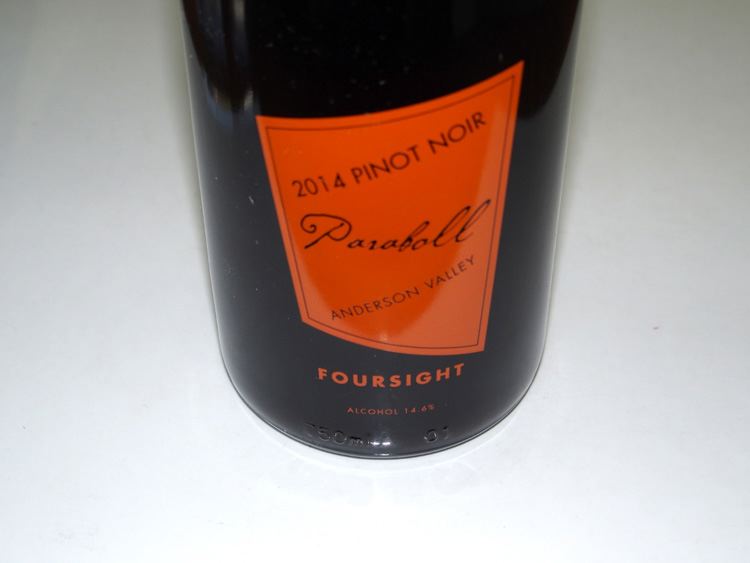 2014 Foursight Paraboll Anderson Valley Pinot Noir 14.6% alc., 100 cases, $54. Release May 2016. From 1880 to 1920, the language of Boontling was spoken in the Anderson Valley. “Para” means “deep, cherry red color,” and “Boll” or “Bahl” means “of excellent quality” in Boontling. Put together, this Pinot Noir is “a great red.” The wine is a homage to a language that may soon be extinct. This wine differs from the other Foursight Pinot Noir bottlings in that it is harvested later for a riper fruit profile and received a different barrel regimen consisting of aging in 50% new French oak for 11 months with heavy and mediumplus toast barrels. 100% estate grapes, Pommard 05 and 777 from Charles Vineyard. · Moderately light reddish purple color in the glass. Nicely perfumed with scents of cherry, sandalwood and Prada leather coat. Bright and fresh flavors of deep red cherry, baking spice and vanilla fan out on the discreetly concentrated palate. Somewhat elegant, with integrated tannins and a red-fruited finish. Score: 92
Hirsch Vineyards, Cazedero, CaliforniaThe 2013 vintage was rather unremarkable in the Fort Ross-Seaview AVA. Bud break occurred in all blocks by March 20, flowering followed on May 11. In mid June, some vines showed water stress due to lack of rain and this was addressed with irrigation. 2.5 inches of rain intervened on June 23-26, leading to an increase in size of the berries, and this, along with hot weather around July 4, led to a large crop. The remainder of July found moderate temperatures allowing for slow and even ripening. Harvest for still wines occurred from September 3 to September 14, making 2013 the most compact harvest on record. All vines were farmed following biodynamic principals. The 2013 vintage Pinot Noirs were among the most delicate wines from Hirsch Vineyards in recent memory. They are the antithesis of the highly concentrated 2012 vintage wines and may leave some consumers looking for more fruit. A very limited amount of West Ridge Estate Pinot Noir was also produced in 2013. Visit www.hirschvineyards.com.
2013 Hirsch Vineyards Bohan-Dillon Estate Sonoma Coast Pinot Noir 13.4% alc., 686 cases, $38. A precocious wine at an exceptional price. · Moderately light reddish purple color in the glass. Nicely perfumed with aromas of blueberry, boysenberry, stem and toasty oak. A lightly weighted wine featuring blue and purple fruit flavors framed by vivid acidity creating a slightly tart character. The wine leans to delicacy with a somewhat hollow mid palate, featuring balanced tannins, oak seasoning in the background and a soprano finish. Score: 87
2013 Hirsch Vineyards San Andreas Fault Estate Sonoma Coast Pinot Noir 13.1% alc., $60. · Moderately light reddish purple color in the glass. Expressive nose featuring aromas of cherry and earthy flora. Light to mid weight in style, with vibrant flavors of cherry and raspberry sparked by bright acidity. A delicate, teasing wine that is forward drinking, with balanced tannins and a thirst-quenching finish. Score: 89
2013 Hirsch Vineyards East Ridge Estate Sonoma Coast Pinot Noir 12.8% alc., 456 cases, $85. Sourced from the warmest part of the vineyard and is the most masculine expression of the Hirsch Vineyard. A selection of the best barrels from the oldest blocks on East Ridge that is planted to Mt Eden, Swan and Pommard clones. · Moderately light reddish purple color in the glass. The nose offers fresh aromas of black grape, black cherry and tender oak. Light to mid weight in character, with a dark red fruit theme. Delicate, well balanced, with a subtle oak overlay in the background, and a pleasing cherry finish. Relatively simple, I yearned for more nuance. Score: 89
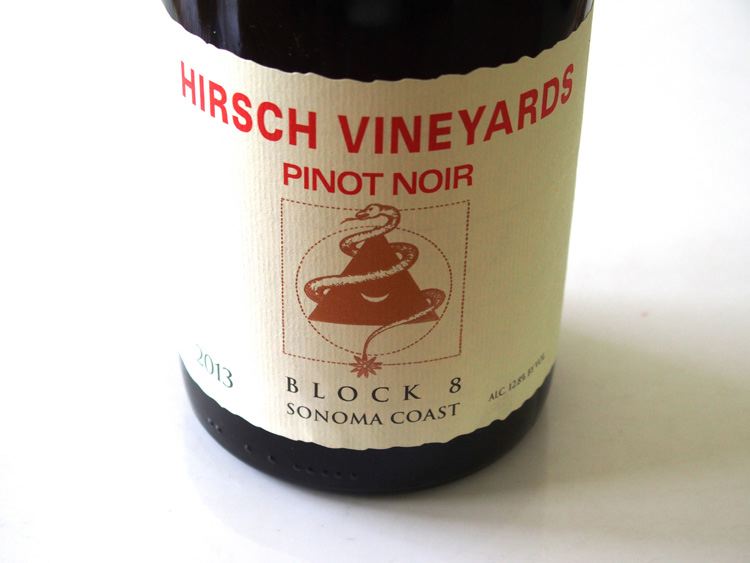 2013 Hirsch Vineyards Block 8 Estate Sonoma Coast Pinot Noir 12.8% alc., pH 3.58, 336 cases, TA 0.58, $85 (sold out). Released January 26, 2016, highly allocated. David Hirsch considers this his grand cru parcel. This block was planted in 1993 to Pommard and Wädenswil clones. Aged in 100% French oak barrels, 35% new. · Moderate reddish purple color in the glass. Very shy, but pleasant aromas of plum sauce, black cherry pie and floral bouquet. Elegant and charming, with flavors of black raspberry, black cherry and spice, with a noticeable iron riff. The soft tannins are slightly astringent. This wine exhibits the longest finish of the 2013 Hirsch Pinot Noirs making it most appealing. When tasted the following day from a previously opened and re-corked bottle, the wine was more enthralling and the finish continued to define its excellence. Score: 92
2013 Hirsch Vineyards Reserve Estate Sonoma Coast Pinot Noir 12.8% alc.,pH 3.60, TA 0.58, 625 cases, $85 (sold out). Released January 26, 2016. A selection of the best barrels from the oldest and finest vineyard blocks at Hirsch Vineyards. Highly allocated. Aged in 100% French oak barrels, 35% new. · Moderately light reddish purple color in the glass. Relatively shy aromas of black cherry, spice and bark lead to a middleweight styled wine with a fresh core of spiced black cherry fruit. More mouthful in this wine with excellent acid integration. When tasted the following day from a previously opened and re-corked bottle, the nose was more expressive and the elegant, soft mouthfeel was apparent. Cellaring is advised. Score: 90-91
Joseph Swan Vineyards, Forestville, California
2013 Joseph Swan Vineyards Cuvée de Trois Russian River Valley Pinot Noir 14.0% alc., $35. A representation of the Russian River Valley as a whole with no single vineyard dominating. The wine always includes wine from all six vineyard designates. Aged in about 33% new French oak barrels. · Moderately light reddish purple color and slight haze (unfiltered) in the glass. The nose smells of whole berry fermentation with aromas of rose petal, cherry and raspberry as well as mushroom and a vegetal note. The mid weight cherry core of fruit is red-themed and lean, with a savory vegetal and floral note in the background. Juicy and slightly tart on the finish. Score: 87
2013 Joseph Swan Vineyards Catie’s Corner Russian River Valley Pinot Noir 13.5% alc., 45 cases, $38. Newest vineyard that is located just south of Windsor and named for Rich and Saralee Knude’s daughter, Catie. Planted in 1996 but budded over to Swan selection from Trenton Estate. Just under 1 acre in size. It is the only 100% Swan Pinot Noir that Joseph Swan Vineyards has bottled. Even the Trenton Estate, which is largely Swan, is not pure. · Moderate reddish purple color in the glass. Shy initially, but picking up interest over time in the glass, revealing aromas of dark red berries, old barrel and caramel. Red to dark red berry flavors are featured in a middleweight style with noticeable fine-grain tannins and a slightly tart, citrus-driven finish. Score: 88
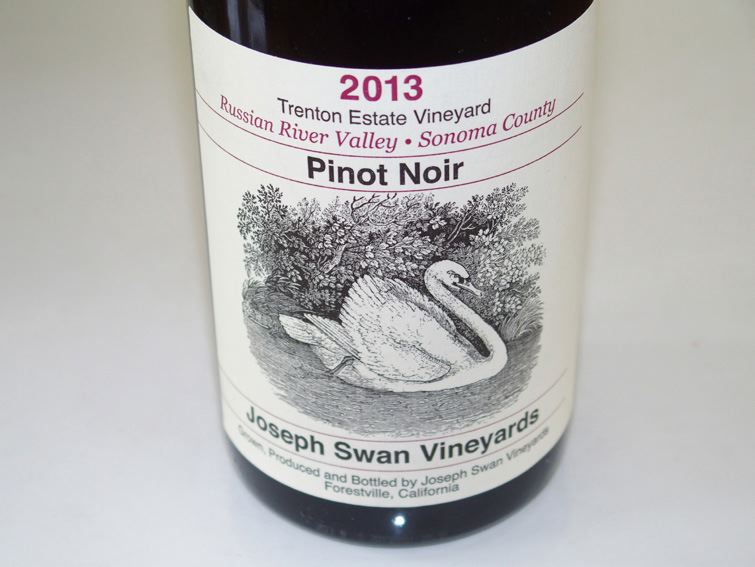 2013 Joseph Swan Vineyards Trenton Estate Russian River Valley Pinot Noir 14.9% alc., $69. More than 40 vintages of this wine have been produced. · Moderate reddish purple color in the glass. The nose features quite a bit of oak at this stage with fruit notes of dark berry and cherry. This wine has the most sap of the three 2013 Joseph Swan wines tasted here, offering flavors of cherry, strawberry and spice with an earthy bent. Nicely balanced with modest tannins and a light touch of oak, finishing with a slight bit of alcoholic warmth. Typically, this bottling improves over time in the cellar and is long lived. Score: 90
Kendall-Jackson Wine Estate & Gardens, Fulton, CaliforniaKendall-Jackson offers both a Jackson Estate Appellation collection and a Jackson Estate vineyard designate collection, both from Jackson Family estate vineyards. The wines are produced with 100% renewable energy and both the estate vineyards and winery are certified sustainable. The wines are available at select onpremise locations as well as through the website at www.KJcom.
2014 Jackson Estate Anderson Valley Pinot Noir 14.5% alc., pH 3.75, TA 0.54, 5,874 cases, $32. Released March 2016. 52% Outland Ridge Vineyard, 35% Boone Ridge Vineyard and 13% Falk Vineyard. 36% clone 667, 25% clone 777, 17% clone “828,” 11% clone 115 and 11% clone 5. Aged 11 months in 100% French oak barrels, 29% new. · Moderate reddish purple hue in the glass. The nose is primarily oak driven with little fruit showing up. Much more pleasing on the palate, with a charge of mid weight black cherry, blueberrypomegranate, spice and vanilla flavors initiating a generous attack and noticeable finishing presence. This wine will appeal to those who welcome a prominent oak overlay in Pinot Noir. Score: 87
2013 Jackson Estate Outland Ridge Vineyard Anderson Valley Pinot Noir 15.0% alc., pH 3.67, TA 0.53, 1,625 cases, $35. Vineyard is located at 1370-1670 feet elevation. Soils are loam over fractured sandstone. 42% clone 667, 31% clone “828,” 15% clone 777, 7% clone 115 and 5% clone 5. Aged 11 months in 76% French oak, 35% new. · Moderate reddish purple color in the glass. Plenty of toasty oak engages the black cherry, ripe strawberry and underbrush aromas that hold up over time in the glass. The discreetly concentrated core of black cherry, dark raspberry and blueberry fruits are embellished with oak-driven notes of toast, spice and anise. The raspberry-imbued and spicy finish has noticeable persistence. Despite the 15.0% ABV, this wine is in balance. Score: 89
MacPhail, Healdsburg, California
2013 MacPhail Sonoma Coast Pinot Noir 14.5% alc., pH 3.40, TA 0.56, 1,025 cases, $40. Released spring 2016. A blend of grapes from 8 vineyards. Clones are 115, 667, 777, 2A, 23, “828,” Pommard, Swan, Calera and Martini. Harvest Brix 24.5º-25.5º. 100% de-stemmed, native and inoculated fermentation, native malolactic fermentation in barrel, and aged 11 months on lees in French oak barrels, 37% new. · Moderately light cherry red color in the glass. Highly aromatic, with scents of cherry hard candy and vanilla. The darker cherry and berry fruits are unusually spiced with notes of cardamom and vanilla. Forward drinking, with silky tannins and a modest finish. Score: 87
2013 MacPhail Pratt Vineyard Sonoma Coast Pinot Noir 14.5% alc., pH 3.67, TA 0.58, 625 cases, $49. Released spring 2016. Clones 23, Pommard 4, 114 and 777. Harvest Brix 24.6º-25.5º. 100% de-stemmed, 5- day cold soak, inoculated yeast fermentation, native malolactic fermentation in barrel, battonage weekly for 3 months, aged 11 months on lees in French oak barrels, 35% new. Bottled unfined and unfiltered. · Moderately light reddish purple color in the glass. Aromas of oak-kissed black cherry lead to a middleweight styled wine with a core of black cherry fruit overshadowed by oak-driven flavors of toast and anise. The tannins are modest and the fruit cries out for attention, but the oak overwhelms what otherwise is a good wine. Score: 87
2013 MacPhail Sangiacomo Sonoma Coast Pinot Noir 14.5% alc., pH 3.66, TA 0.56, 241 cases, $49. Released spring 2016. Clones 115 and Pommard. Harvest Brix 25.0º. 100% de-stemmed, 6-day cold soak, native fermentation, native malolactic fermentation in barrel, battonage weekly for 3 months, and aged 11 months in lees in French oak barrels, 28% new. Bottled unfined and unfiltered. · Moderately light reddish purple color in the glass. Pleasant aromas of black raspberry, black cherry and ripe strawberry lead to a full-bodied charge of black cherry and black raspberry fruits that are graced by complimentary tannins. Enviable fruit expression and admirable balance, with some finishing length. Score: 90
2013 MacPhail Dutton Ranch Green Valley of Russian River Valley Pinot Noir 14.5% alc., pH 3.66, TA 0.57, 638 cases, $49. Released spring 2016. Sourced from Thomas Road and Manzana vineyards. Clones “828,” 777 and 115. Harvest Brix 24.7º. 100% de-stemmed, 4-day cold soak, proprietary yeast fermentation, native malolactic fermentation in barrel, battonage in barrel once weekly for 3 months, and aged 11 months on lees in French oak barrels, 35% new. Bottled unfined and unfiltered. · Moderately dark reddish purple color in the glass. Engaging aromas of black raspberry, blackberry, black walnut and vanilla lead to a luscious and pleasing dark fruit compote that attacks with purpose. Very polished with elite tannins. Only a slight warmth on the finish intrudes on the pleasure. Score: 90
2013 MacPhail Wildcat Mountain Sonoma Coast Pinot Noir 14.9% alc., pH 3.69, TA 0.60, 217 cases, $49. Released spring 2016. Clones 115, 667, 777 and “828.” Harvest Brix 25.5º100% de-stemmed, 5-day cold soak, inoculated yeast fermentation, native malolactic fermentation in barrel, battonage weekly for 3 months, and aged 11 months in French oak barrels, 30% new. Bottled unfined and unfiltered. · Moderate reddish purple color in the glass. Considerable coaxing is needed to bring out shy aromas of wild berries and forest floor. The dark berry essence satisfies and is well framed by gritty tannins and some oak overlay. Overall, the wine is quite enjoyable, but nothing stands out. Score: 89
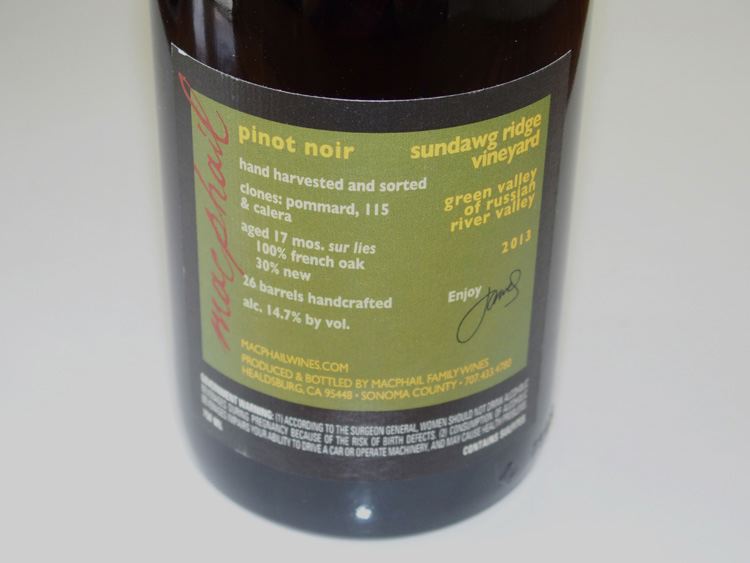 2013 MacPhail Sundawg Ridge Green Valley of Russian River Valley Pinot Noir 14.5% alc., pH 3.59, TA 0.59, 640 cases, $49. Released spring 2016. Clone 115, Pommard and Calera. Harvest Brix 24.6º to 25.0º. 100% de-stemmed, 5 to 6-day cold soak, native and inoculated fermentation, native malolactic fermentation in barrel, battonage weekly for 3 months, and aged 16 months on lees in French oak barrels, 35% new. Bottled unfined and lightly filtered. · Moderate reddish purple color in the glass. The aromas pick up interest and intensity over time in the glass, offering enticing notes of black raspberry, blackberry jam, prickly pear and spice. On entry, the explosion of dark red fruits really wakes up the palate. The wine exhibits adroit balance with a pleasing grip of acidity on the glorious finish that brings plenty of fruit to bear. Score: 92
2013 MacPhail “The Flyer” Russian River Valley Pinot Noir 14.7% alc., pH 3.57, TA 0.56, 263 cases, $59. Released spring 2016. Sourced from Susanna’s Vineyard. Clones are Calera, Dehlinger Swan, and Quail Hill Vineyard Swan. Harvest Brix 24.5º-25.0º. 100% de-stemmed, 6-day cold soak, primary fermentation started with native yeast, then finished with proprietary yeast, native malolactic fermentation in barrel, batonnage weekly for 3 months, and aged 16 months on lees in French oak barrels, 45% new. Bottled unfined and unfiltered. · Moderate reddish purple color in the glass. The nose is dominated by oak-driven aromas of espresso and tobacco. Much better on the palate, with an enjoyable, intensely flavored essence of oak-kissed, black cherry and purple berry fruits. Well-endowed with fruit, but still light and seductively silky on the palate. Your tolerance for the notable imprint of oak will determine your pleasure. Score: 89
2012 MacPhail Anderson Creek Anderson Valley Pinot Noir 14.5% alc., pH 3.81, TA 0.57, 114 cases, $49. Released fall 2014. Clones 777 and 115. Harvest Brix 24.8º. 100% de-stemmed, 5-day cold soak, native and inoculated yeast fermentation, native malolactic fermentation in barrel, battonage in barrel once weekly for 3 months, and aged 11 months in French oak barrels, 50% new. Bottled unfined and unfiltered. · Dark reddish purple color in the glass. The nose is closed for business and despite considerable time, never reveals any notable aromas. A richly flavored, big boy wine with intense dark fruit flavors and matching tannins. This is a fruit-driven wine of considerable heft that lacks nuance but will please those who welcome hedonistic fruit. There is a slight residual of warmth on the finish. Score: 88
Martin Ray Vineyards & Winery, Santa Rosa, California
2013 Martin Ray Reserve Sonoma Coast Pinot Noir 14.1% alc., pH 3.63, TA 0.61, $40. Released March 2015. Sourced from Emeritus Vineyard in Annapolis. Harvest Brix 24.6º. Grapes are de-stemmed, saignéed for concentration, 3-day cold soak, nearly 33% whole cluster, 10-day fermentation in open-top bins, and aged 15 months in French oak barrels, 60% new, with monthly battonage. · Moderate reddish purple color in the glass. Shy aromas of blackberry jam and turned earth. Mid weight plus flavors of créme de cassis, blackberry and subtle dried herbs. Somewhat brooding and thick, with a balanced structure and some cut on the fruit-driven finish. When tasted the following day from a previously opened and re-corked bottle, the wine still lacked character with the fruit seemingly asleep. Perhaps cellaring will prove of benefit. Score: 88
2013 Martin Ray Reserve Green Valley of Russian River Valley Pinot Noir 14.1% alc., pH 3.64, TA 0.54, $40. Released January 2015. Sourced from Tina Maria Vineyard and nearby Marty’s Vineyard of Dutton Ranch. Harvest Brix 24.4º. Saignéed for concentration, 3-day cold soak, 10-day fermentation in open-top bins, basket pressed, and aged 12 months in French oak barrels, 40% new. · Moderate reddish purple color in the glass. Pleasant aromas of black cherry and spice lead to a mid weight plus wine featuring vibrant flavors of dark red and black berries and Damsel plum. A slight riff of earthiness and oak seasoning is complimentary. More uplifting and fresh than the Sonoma Coast bottling with some intensity on the clean finish. Score: 89
2013 Martin Ray Reserve Dark Star Hill Russian River Valley Pinot Noir 13.9% alc., pH 3.63, TA 0.56, $40. Sourced from a small hillside vineyard overlooking the town of Freestone in the southwestern corner of the Russian River Valley AVA. 100% de-stemmed, each clone fermented separately and aged individually for 16 months in French oak barrels, 50% new. · Moderate reddish purple color in the glass. The nose is reluctant, even over time in the glass. When tasted the following day from a previously opened and re-corked bottle, no fruit emerged, leaving only toast and vanilla aromas. Not particularly expressive on the palate either, with a mid weight plus charge of blackberry, black cherry and plum fruit flavors accented with vanilla and toasty oak. The tannins and acidity are well managed, but the oak imprint is too aggressive. Unchanged the following day from a previously opened and re-corked bottle. Cellaring may bring out more character. Score: 88
Siduri Wines, Santa Rosa, CaliforniaAdam and Dianna Lee produce about 10,000 cases of Pinot Noir annually. Each barrel is vinified separately by lot, clone, yeast and cooper, then blended individually and bottled unfiltered and unfined. The wines are sold directly to winery mailing list members and through distributors to select restaurants and wine retailers nationally. Tasting at the winery is by appointment daily. Visit www.siduri.com.
2014 Siduri Russian River Valley Pinot Noir 14.1% alc., 7,055 cases, $34, screwcap. Released October 1, 2015. · Moderately dark reddish purple color in the glass. Shy aromas of dark cherries, baking spices and bark tend to fade over time in the glass. Light to mid weight core of black cherry, cola and smoky oak flavors are blended in harmony with tannins and acidity, finishing with a sweet, candied cherry note. Score: 87
2014 Siduri Parsons’ Vineyard Russian River Valley Pinot Noir 14.4% alc., 484 cases, $50, screwcap. Released March 1, 2016. · Moderate reddish purple color in the glass. Expressive aromas of Bing cherry and baking spices lead off, echoed on the palate with added notes of nutmeg and toasty oak. Juicy and bright, with an uplifting finish. When tasted the following day from a previously opened and re-corked bottle, the wine revealed more baked fruit aromas, even a hint of prune, not surprising as this vineyard is located in a warmer site. Score: 88
2014 Siduri Lingenfelder Vineyard Russian River Valley Pinot Noir 14.4% alc., 169 cases, $50, screwcap. Released April 1, 2016. · Moderate cherry red color in the glass. Demure aromas of cherry, dried herbs and sandalwood. Mid weight flavors of Bing cherry and blueberry with a hint of spice, picking up interest over time in the glass. Soft, balanced tannins make for easy drinking. A fruit-driven wine with solid balance but not particularly complex. Score: 88
2014 Siduri Ewald Vineyard Russian River Valley Pinot Noir 14.1% alc., 236 cases, $50. Release May 1, 2016. · Moderate reddish purple color in the glass. Deep aroma of black cherry is highlighted by scents of smoke, charcoal, shredded bark and peppery spice. Quite silky in the mouth, with mid weight plus flavors of black cherry and black raspberry with hints of spice and toast, backed by modest tannins. I wish the wine had slightly less oak influence, but is otherwise very solid. Score: 89
2014 Siduri Keefer Ranch Russian River Valley Pinot Noir 14.4% alc., 209 cases, $60, screwcap. Released March 1, 2016. · Moderately dark reddish purple color in the glass. Plenty of oak shows up on the nose and palate which feature black cherry and black raspberry fruit flavors. Unusually big and lush for Keefer Ranch with a dark fruited character. The wine was more appealing the following day from a previously opened and re-corked bottle, offering an array of purple and black fruits and spice, but retaining a noticeable oak overlay. The wine lacks a bit of Keefer Ranch characteristic vibrancy. Score: 89
2014 Siduri Pratt-Sexton Vineyard Sonoma Coast Pinot Noir 14.4% alc., 134 cases, $55, screwcap. Released February 1, 2016. · Moderate reddish purple color in the glass. This wine has a woody, stem note in the background that blends with very ripe black cherry and blackberry flavors. Modest in weight, with suave tannins and a good attack and finish. The wine is well-crafted, but I can’t say I was enamored by the fruit profile. Highly individualistic. Score: 89
2014 Siduri Van der Kamp Vineyard Sonoma Mountain Pinot Noir 14.4% alc., 200 cases, $49, screwcap. Released February 1, 2016. · Moderately light reddish purple color in the glass. A very savory and distinctive wine of great interest. The nose leads with the scents of cherry, tea leaves and dried herbs. The mid weight essence of black cherry fruit has an earthy underpinning as well as accents of green tea and subtle oak. Nicely balanced with silky tannins and a generous finish that speaks more of unrefined, composted and feral nuances than fruit. Score: 91
2014 Siduri Santa Lucia Highlands Pinot Noir 14.4% alc., 2,793 cases, $39, screwcap. Release May 1, 2016. · Moderately dark reddish purple color in the glass. Challenging to evoke any identifiable aromas in this wine. Much better, even very tasty, on the palate with a full-bodied and focused arrow of blackberry and boysenberry fruits that are expansive and demonstrative. A luscious, very approachable wine that was still delightful the following day from a previously opened and re-corked bottle when a bit of spice showed up and the aromatics were more giving. Score: 90
2014 Siduri Rosella’s Vineyard Santa Lucia Highlands Pinot Noir 14.4% alc., 938 cases, $60, screwcap. Released February 1, 2016. · Moderately dark reddish purple color in the glass. Riper and more darker red fruited than usual for Rosella’s in this vintage, but the quality of the fruit really shines from entry to finish. The fruit has a slightly cooked quality, but still seduces. The oak is deftly managed, the tannins are complimentary, the texture is smooth, and the fruity finish is noticeably generous. Score: 91
2014 Siduri Garys’ Vineyard Santa Lucia Highlands Pinot Noir 14.5% alc., 586 cases, $60, screwcap. Release May 1, 2016. · Moderately dark reddish purple color in the glass. The nose seduces with aromas of blackberry, black raspberry and spice. Very giving on the palate with a well-ripened onslaught of purple and black fruits tempered by ripe tannins and a tender dose of oak. The silky texture and lingering finish are both special features of this fine wine. Score: 92
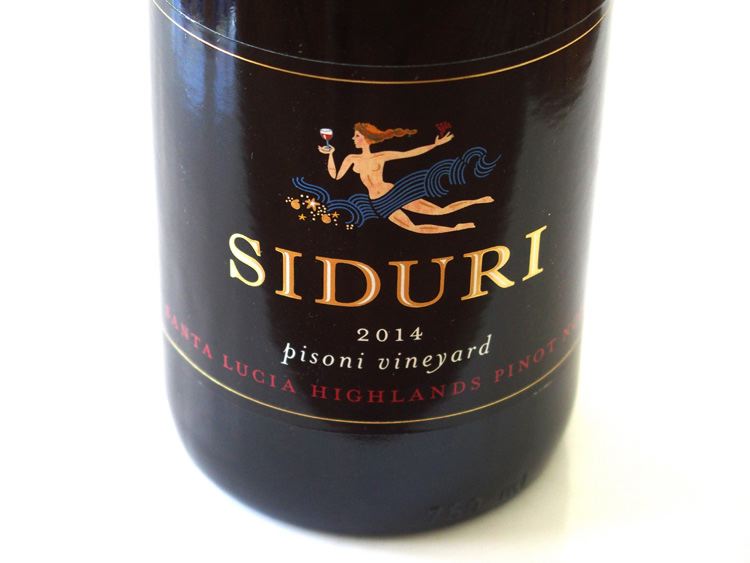 2014 Siduri Pisoni Vineyard Santa Lucia Highlands Pinot Noir 14.4% alc., 1,011 cases, $65, screwcap. Released February 1, 2016. Bottled without fining or filtration. Both vegan and gluten free. · Dark reddish purple color in the glass. Brooding, mysterious aromas of blackberry compote, meaty black grapes and iron. Clearly a special, full-bodied and luscious wine that balances power with charm. The array of heady black fruits is dusted by earthy complexity and framed by mellow tannins that are unusually tame for a Pisoni Pinot Noir. There is beautiful integration of acidity, oak and alcohol, with a remarkably long, royally endowed finish. The pedigree really stands out in this sublime offering. Score: 94
2014 Siduri Clos Pepe Vineyard Sta. Rita Hills Pinot Noir 688 cases, $60, screwcap. Release May 1, 2016. · Moderate reddish purple color in the glass. Pleasing combination of black cherry reduction sauce, black raspberry preserves and caramel apple aromas. Fruit-laden but carefree, with uplifting flavors of black cherry and black raspberry that attack the mid palate with purpose. Quite luscious and juicy, with modest tannins, a bright thread of acidity, and a very long, fruit-laden finish. Score: 92
2014 Siduri Willamette Valley Pinot Noir 14.1% alc., 10,699 cases, $28, screwcap. Released October 1, 2015. · Moderately light reddish purple color in the glass. This wine blends the best of both worlds of power and elegance in a harmonious package. Aromas and flavors of black cherry, black plum, black tea, tobacco and a hint of tarry oak are pleasingly boisterous in this impressive valuepriced wine. Score: 89
Stoller Family Estate, Dayton, OregonThe 2014 vintage in the Willamette Valley had a temperate spring, perfect weather at fruit set, and a warm and dry summer. Harvest was the earliest on record, beginning September 8. The wines from this vintage are concentrated and fruit-driven. For more information on the winery, visit www.stollerfamilyestate.com.
2014 Stoller Family Estate Dundee Hills Oregon Pinot Noir 13.8% alc., pH 3.49, TA 0.62, $30. 100% estate fruit, crafted in an approachable style. Aged in French oak barrels, 20% new and 80% neutral. · Moderate reddish purple color in the glass. Engaging aromas of black raspberry, black cherry, rose petal and spice lead to a mid weight plus offering that pleases with its robust darker fruits and spice and mocha accents. Precocious and luscious, with impressive balance and a generous finish. Unusually sappy for Oregon in this vintage. Score: 91
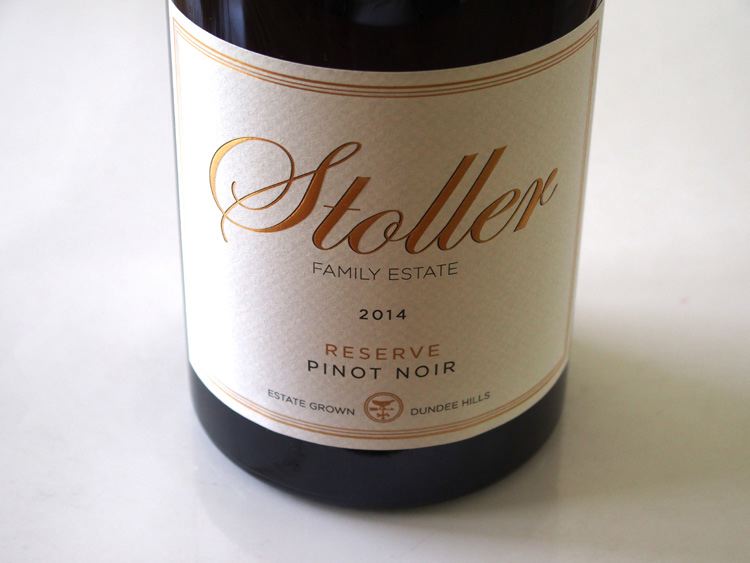 2014 Stoller Family Estate Reserve Dundee Hills Oregon Pinot Noir 14.1% alc., pH 3.55, TA 0.60, $45. 100% estate grown. Sourced from older sections of the vineyard and includes several clones. Aged in French oak barrels, 30% new and 70% neutral. · Moderately dark reddish purple color in the glass. The nose leads with exuberant aromas of black cherry, spice cabinet, and dark chocolate. A gorgeous wine featuring an onslaught of purple and black fruits including blackberry, black cherry and black currant that sustain through a full-bodied mid palate and lead to a bountiful finish blessed with beautifully ripened fruits that fan out in peacock tail fashion. There are nuances to be found as well, including Asian 5-spice, dark chocolate, and anise. A bold wine that despite its fruit load is impeccably balanced so that it finds a level path and never veers from its purpose. A California wine dressed up in Oregon clothing. In one word, superb. Score: 95
Windy Oaks Estate, Corralitos, California
13.7% alc., $58. Wine club and tasting room only. Fermented up to 8 weeks in French oak, 1-ton, open fermentation tanks. Unfined and unfiltered. · Moderately light reddish purple color in the glass. Pleasing fusion of black cherry and toasted oak on the nose. The mid weight core of black cherry and plum fruit flavors is encased in a cloak of oak that is well-tailored to the fruit. The wine is nuanced with flavors of cumin and other chili spices, and bourbon. Slightly more concentrated than the other two 2013 wines reviewed here, with welcome silky tannins and a bright finish. This wine shows the best side of a fruit and oak marriage. Score: 92
13.7% alc., $58. Wine club and tasting room only. Unfined and unfiltered. · Light reddish purple hue in the glass (whole cluster fermented wines tend to have lighter color). The whole cluster driven aromas include cherry, red berry, dusty rose and spice. Highly flavorful, offering a deep cherry essence with a subtle underpinning of floral and vegetative notes framed by dry, fine-grain tannins. The finish is flush with cherry fruit and exotic spice accents. Score: 93
2013 Windy Oaks Proprietor’s Reserve Schultze Family Vineyard Santa Cruz Mountains Pinot Noir 13.7% alc., $65. Wine club and tasting room only. Primarily from the 1.5-acre Bay Block of the original 3-acre vineyard planting. Unfined and unfiltered. · Moderately light reddish purple color in the glass. An array of fruit aromas and flavors include cranberry, cherry and blueberry accented by a subtle nutty oak seasoning in the background. Seamless, elegant and very friendly with an admirable attack and satisfying finish. Less adventurous and more traditional in style than the Limited Release wines. Score: 92
A Pair of Enduring Pinot Noir Festivals Arouse Pinotphiles
|
